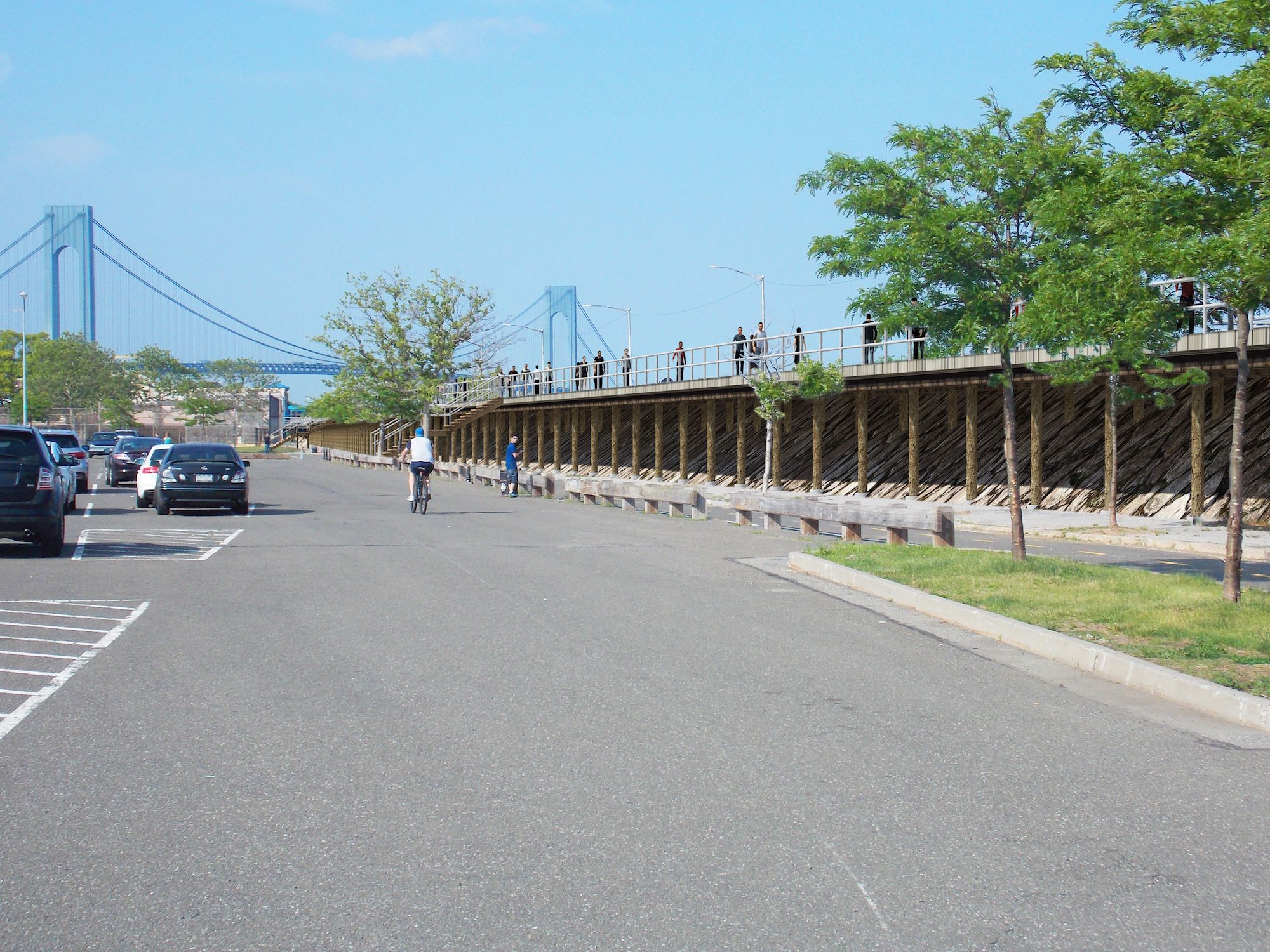By 2025, New York’s Staten Island will be fortified by a towering seawall running 5.3 miles along the coast, an engineering feat designed to ward off a growing threat.
The climate crisis is predicted to create more powerful and extreme weather systems all over the world, and coastal engineers are racing to respond with structures to reduce their impact.
The first seawalls were built centuries ago, though there are now, arguably, greater assets to protect and more people living along vulnerable coastlines than ever before.
A recent report by the Center for Climate Integrity estimated it could cost the US more than $400 billion over the next 20 years to protect coastal communities.
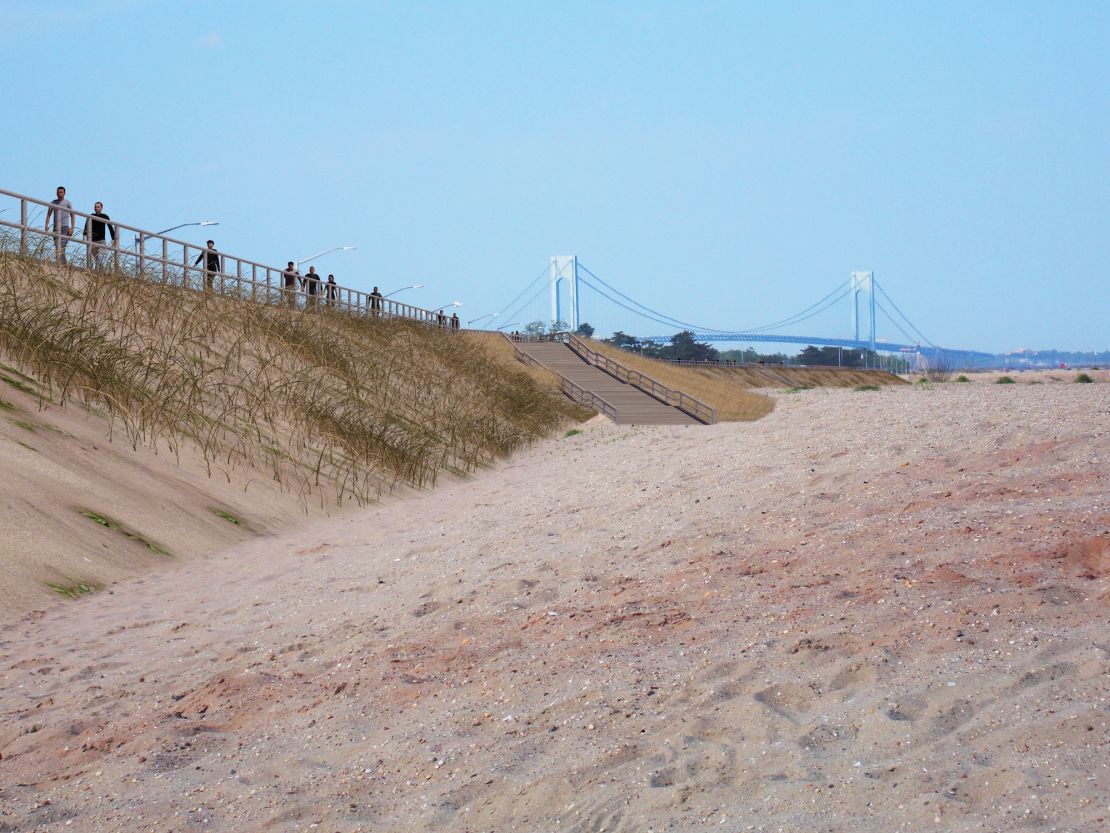
That’s a lot of money to invest in shorelines that naturally move and change with tidal flows.
“Where you have these public and private interests colliding in a contested space, like the coast, that faces ordinary weather events being compounded by climate change, people will look for a solution that gives them as much security as they can hope to achieve,” said Tayanah O’Donnell, a senior lecturer at the Australian National University (ANU).
Seawalls are not only expensive to install but need regular maintenance if they are to withstand the prolonged barrage of pounding waves. But in many places they are considered vital to protect land and property that would otherwise be swept out to sea.
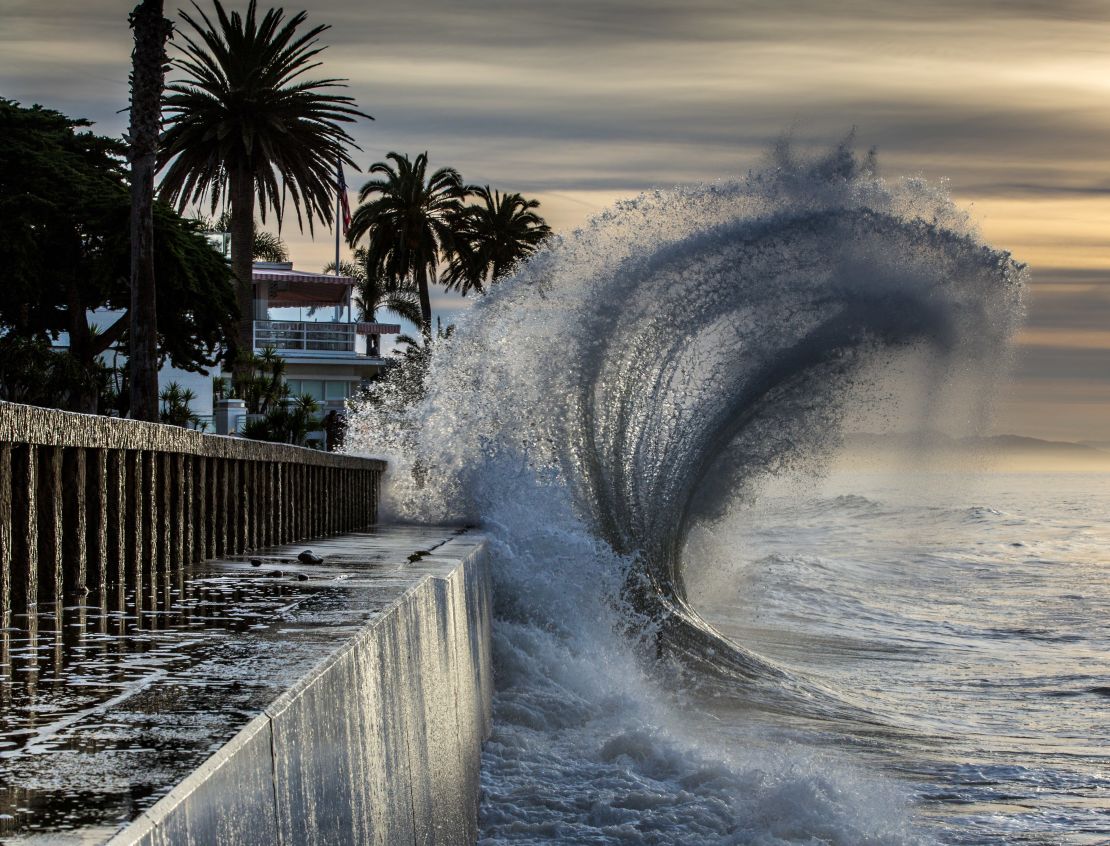
Techniques used centuries ago are being refined and reinvented, and the latest designs have found new ways of encouraging marine life to coexist with man-made structures.
Staten Island’s new wall
When Hurricane Sandy smashed into the US East Coast in 2012, Staten Island was overwhelmed by massive waves that swept away properties and killed 24 of the dozens of people who eventually died in the storm.
With a population of almost half a million, low-lying Staten Island was no match for the waves whipped up in New York Harbor, one of which reached a record 32.5 feet high.
Seven years later, $615 million in funding has been secured for the ultimate defense – a levee, buried seawall and vertical floodwall reaching 20 feet above sea level.
Topped with a public walkway, it’s officially being called the “Staten Island Multi-Use Elevated Promenade.” Graphic visualizations of the wall, released by New York Governor Andrew Cuomo’s office, show happy cyclists riding along a wooden deck near an ice-cream stand and coin-operated telescopes pointed out to sea.
The boardwalk will be big enough to host concerts, carnivals, marathons and cultural events, the governor’s office says. But the new promenade’s true public value will only be measured by how well it succeeds in shielding people from natural disaster.

The seawall will be built to withstand a 300-year flood event – a water height two feet above the highest levels recorded during Hurricane Sandy, said Frank Verga, a project manager at the New York District of the United States Army Corps of Engineers (USACE).
“The project is a proven engineering solution to withstand multiple storms, with adaptability to be modified in future to address sea level rise, if required,” said Verga in an email.
According to the final feasibility study, the wall is estimated to reduce damages, including risk management, by $30 million each year.
But it won’t prevent all flooding, and in the case of severe storms residents will still need to follow orders to evacuate.
Centuries-old technology
For centuries, humans have been barricading shorelines to prevent encroachment from the sea. Some of the earliest examples have stood the test of time, albeit only after regular reinforcement.
In India’s Puducherry, formerly known as Pondicherry, a seawall constructed by the French in 1735 is credited with saving lives in 2004, when the Asian tsunami threw successive walls of water at the coast.
On the other side of the Indian subcontinent, villagers along the Kerala coast have been campaigning local authorities to erect new seawalls to stop their homes from being swept out to sea.
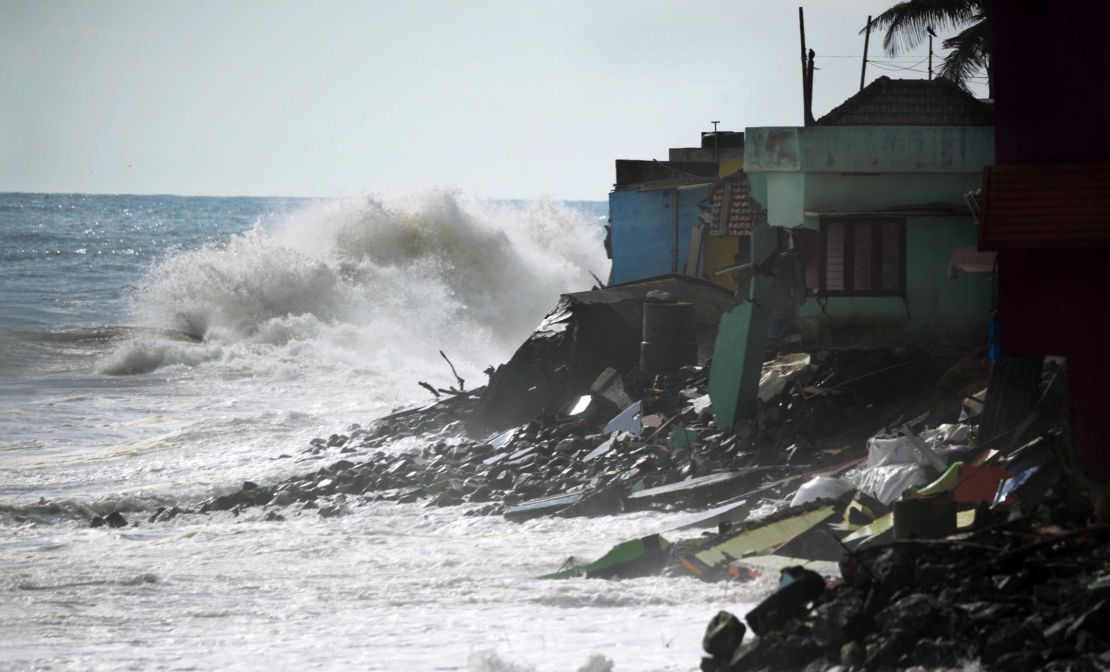
In the past month alone, at least six homes in the city of Alappuzha have been lost to the water, according to Haran Babu, Executive Engineer of the Alappuzha division of Kerala’s Irrigation Department.
Barricades already sit along 43 miles of the city’s 47-mile coast, but large sections of wall are crumbling, sinking and being overwhelmed by waves.
“Thirty-five kilometers (22 miles) of these seawalls are damaged and waves rise above them with ease,” Babu said.
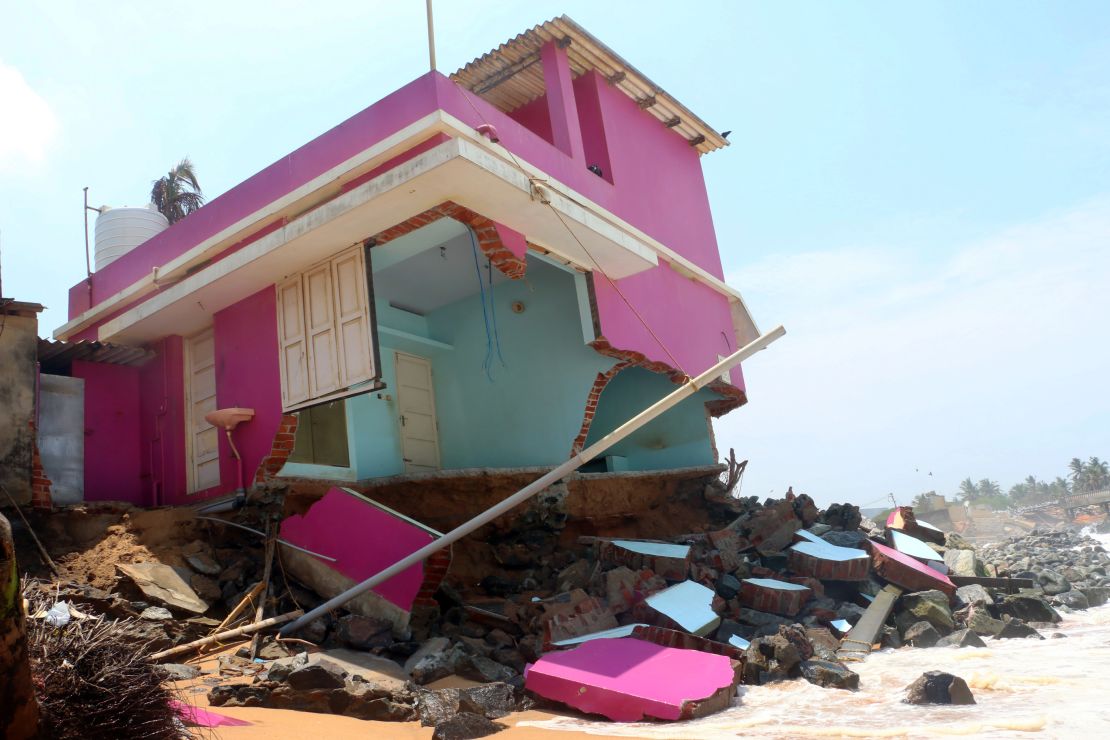
Breakwaters and seawalls will be constructed in the worst-hit areas, but work is not expected to start for another two to three months, until after monsoon season, he said.
The seawalls will be built of rock, geo-synthetic bags filled with sand, and “geo tubes,” which contain sand and water. In some cases, bags are being filled with vegetation from the local area, said P. I. Sheik Pareeth, managing director of the Kerala State Coastal Area Development Corporation.
“Mostly granite is being used but in some cases we are using vegetation – a particular type of vegetation from the trees there,” Pareeth said.
The design of seawalls has evolved over time, from rock – which is still used – to interlocking concrete units, including the Tetrapods commonly seen in Japan. When rock isn’t available, concrete can be more cost-efficient, allowing large numbers of correctly-sized parts to be produced.
In recent years there’s been a greater push towards natural solutions – using dunes, mangroves and man-made reefs alongside man-made walls to help calm the sea.
“We’re not only building a structure that is functional in an engineering sense but it’s functional in an environmental sense,” said Matt Eliot, a coastal engineer and direct of Seashore Engineering based in Perth, Australia. “We’re using that to look for what habitats we can encourage to make it better for the plants and animals in the area.”
In some cases, holes and crevices are being built into the walls to encourage nature to grow around them. Other designs seek to reduce the impact of waves before they hit.
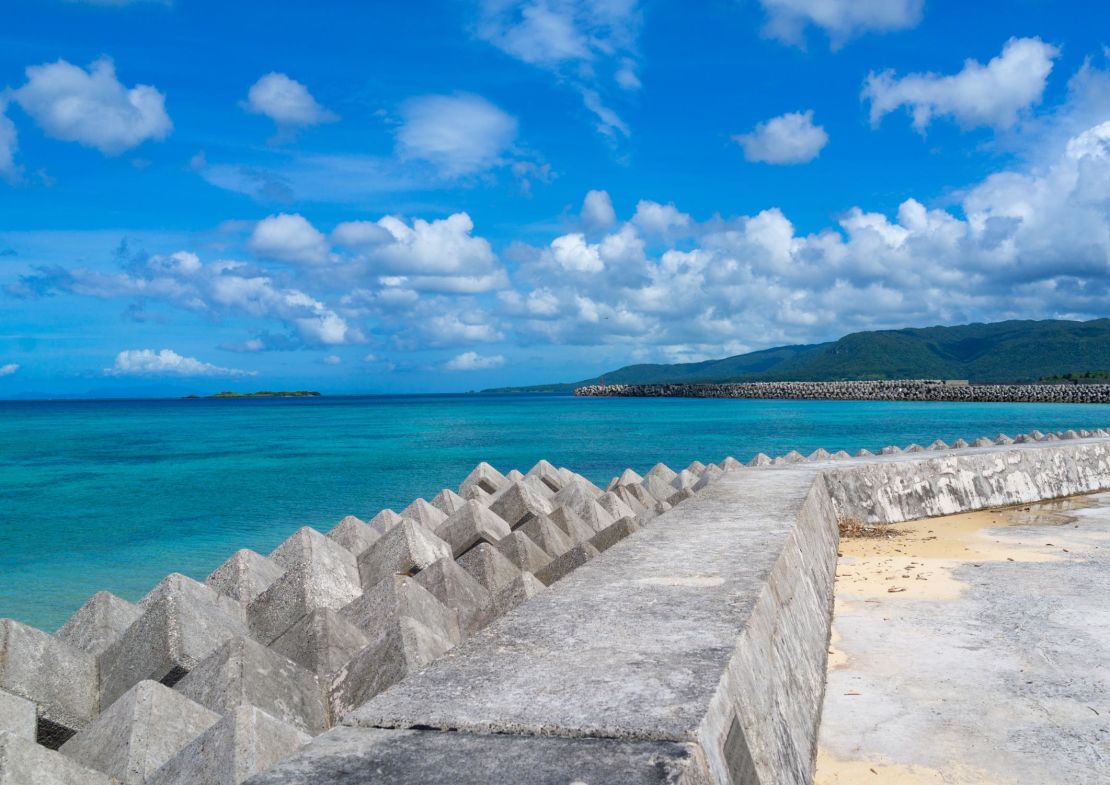
One example of that can be found off Rarotonga, one of the Cook Islands, where angular, concrete boxes lie stacked against the shoreline, moving with the water and breaking up large waves.
“So instead of it all rushing towards the coast, (the wave) gets pushed up, it gets pushed back, it gets pushed through the space in the holes,” Eliot said.
“That type of system, from an engineering perspective, is quite beautiful and quite different, so it’s a way of dissipating a wave rather than a wave block.”

The engineering may be aesthetically pleasing, but the stark, industrial design is at odds with the white sand and natural beauty of the beach.
More modern designs combine a number of protective features to create sheltered habitats for marine animals and plants.
At Fort Pierce Marina in Florida, designers at Tetra Tech built a series of curved breakwater islands and tee-shaped groins to repair some of the damage caused by Hurricane Frances in 2004. The hard engineering is complemented by 21 acres of new habitats for oysters, mangroves, dune grass and seagrass, as well as a nesting ground for birds.
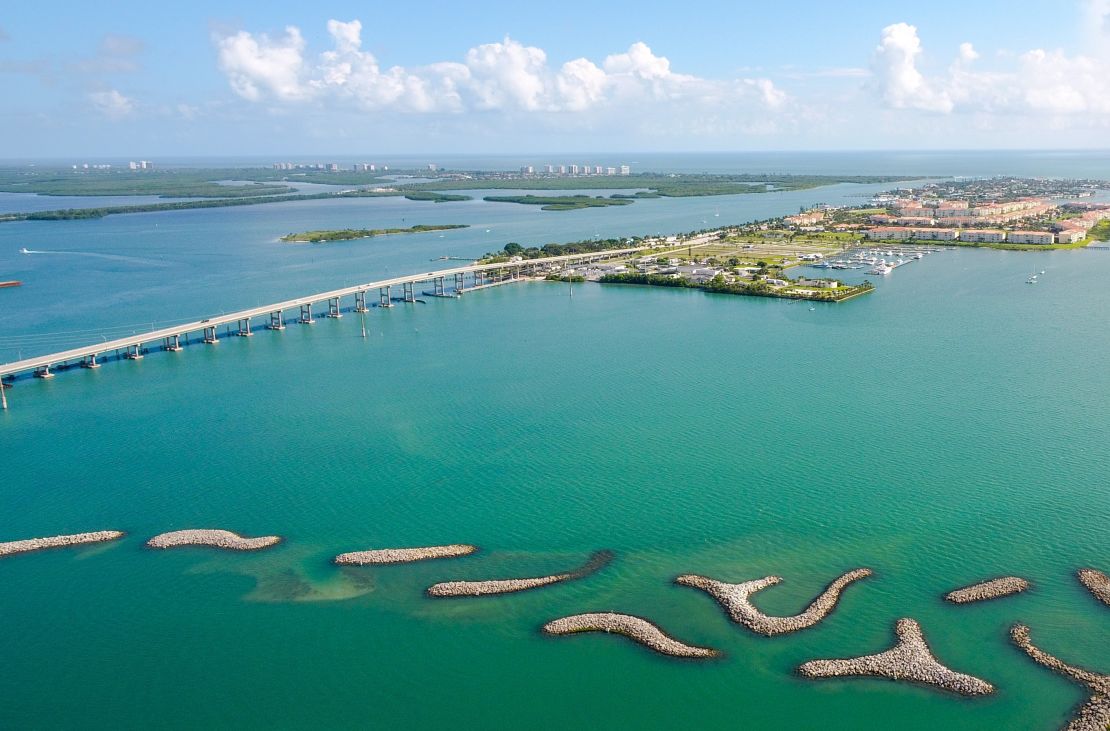
However, more rudimentary efforts to erect seawalls risk creating new problems further down the beach.
“You might see increased erosion at the end of that seawall because the coastline is trying to do what coastlines all around the world do in their natural environment, and that is move and change according to tides and seasons,” said O’Donnell from ANU.
O’Donnell said the rush to build sea walls was “complex but almost intuitive” as people seek to protect private assets and culturally valuable sites like beaches. However, she added, seawalls can only restrain the coast for so long.
“Human beings cannot engineer nature forever, either positively or negatively. People will push back, particularly those with private property interests … but eventually a decision will need to be made, which will be: you can’t live here anymore,” O’Donnell said.
Eliot said that while some seawalls have been shown to work for centuries, engineering is not “a magic solution” for a disappearing coast.
“If you have erosion pressure, that means there’s a deficit of sediment somewhere. You cannot make sand reappear, so all you are doing by coastal engineering is pushing that pressure to a new location,” Eliot said.
In New York, the first contracts for the Staten Island seawall are expected to be awarded next summer, with work to begin soon after, according to the USACE.
The design also includes wetlands, and is part of the New York Mayor Bill de Blasio’s $10 billion scheme to “climate-proof” New York City, an investment he says is needed to tackle a “national emergency.”
“New York doesn’t have a choice but to prepare for what’s coming. Neither does Miami, Houston, Charleston or any of the coastal cities facing an existential threat to their future,” De Blasio wrote in an article in March for a New York magazine.
And it’s not just US cities facing the threat of rising water. Major international cities including Jakarta in Indonesia and Ho Chi Minh in Vietnam – home to a combined 18 million people – are under urgent pressure to act.
With so many people living so close to the sea, the potential losses are staggering– and the financial cost of creating a durable solution is rising by the day.
“The longer we take to mitigate against climate change, the more expensive it’s going to be to adapt to a changing climate,” O’Donnell said.
CNN’s Swati Gupta contributed to this report. Correction: This story has been updated to correctly reflect the estimated reduction in storm damage costs.

